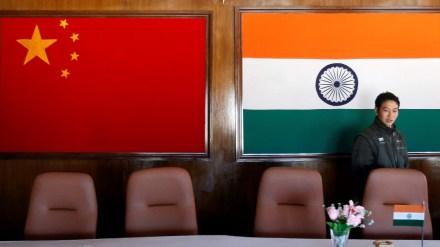In a significant diplomatic development, Indian External Affairs Minister S Jaishankar and Chinese Foreign Minister Wang Yi engaged in high-level discussions on the sidelines of the G20 summit in Rio de Janeiro, marking the first official talks since the disengagement of military forces in two key friction points along the India-China border—Demchok and Depsang—in eastern Ladakh. These talks signal an important step in normalizing bilateral relations after years of tense military standoffs.
The Disengagement Process: A Step Toward Stability
The disengagement of troops in the Demchok and Depsang areas, which was completed in late October, represents the most recent breakthrough in a prolonged border standoff between India and China. The disengagement was the result of months of negotiations, following a four-year military standoff that began in May 2020, after a violent clash in the Pangong Lake area.
On October 21, the two nations agreed on the process of disengagement, which has now largely been completed. According to reports, both Indian and Chinese militaries have resumed patrols in these areas after more than four years. The process is viewed as a significant de-escalation of military tensions, with both sides withdrawing troops from the region, a move seen as key to restoring stability in the border areas.
During their meeting at the G20 summit, Jaishankar and Wang Yi discussed the implementation of the disengagement agreement and noted the progress made so far. Jaishankar expressed satisfaction that the disengagement had proceeded according to plan, reinforcing the commitment of both sides to de-escalate military tensions. “On the ground, the implementation of that understanding has proceeded as planned,” Jaishankar said in a post on X, adding that both sides were now focusing on the next steps in their bilateral relationship.
Dialogue Resumption and Future Engagements
The disengagement, while a critical step, is only part of a broader effort to normalize ties between the two Asian giants. One of the most important outcomes of the recent high-level talks was the decision to revive multiple dialogue mechanisms, including the Special Representatives (SR) talks on the boundary issue. These talks had been suspended for some time due to the ongoing military standoff but were reinvigorated following a meeting between Indian Prime Minister Narendra Modi and Chinese President Xi Jinping in Kazan, Russia, on October 23.
Jaishankar and Wang Yi agreed to move forward with the SR dialogue, which is aimed at addressing the long-standing boundary dispute. India’s National Security Advisor, Ajit Doval, is expected to represent India at these talks, while Wang Yi will represent China. The resumption of these discussions is crucial, as the SR talks are intended to address not only the security situation along the Line of Actual Control (LAC) but also broader bilateral concerns.
“Some progress, some discussions have happened in that direction,” Jaishankar remarked, highlighting that both sides are taking the necessary steps to move forward with these talks.
The Path to De-escalation
While the disengagement is an important milestone, both countries remain cautious. Despite the withdrawal of troops from Depsang and Demchok, the military presence along the LAC has not significantly diminished. Both India and China maintain around 50,000 to 60,000 troops each in the region, signalling that while disengagement has been achieved in some areas, the overall military buildup continues.
The next phase of discussions will focus on de-escalation, an objective that involves reducing the military presence along the LAC and ensuring that tensions do not escalate further. According to General Upendra Dwivedi, the Indian Army Chief, trust needs to be restored between the two nations, and both sides will have to reassure each other to move forward. He noted that the disengagement had addressed the “problem” along the LAC, but the focus now must shift to de-escalation and confidence-building measures.
India, in particular, has maintained that normalizing relations with China cannot occur unless there is peace and stability along the border. External Affairs Minister Jaishankar, speaking at a public event in Delhi, echoed this sentiment, stating that while the disengagement was a positive development, it was just the first step. “It is reasonable to expect some improvement in relations following the final round of disengagement, but there will be no reset of ties unless there is sustained peace on the border,” he said.
Bilateral Relations: A Broader Context
The talks between Jaishankar and Wang Yi were not confined to border issues alone. The two ministers also discussed the broader trajectory of India-China relations, especially in the context of global developments. Jaishankar stressed the importance of India-China ties not just for the two countries but for the region and the world at large. He noted that both nations played a significant role in shaping outcomes at international platforms like the G20 and BRICS.
“It was a reminder to us of the importance of our two countries in international politics. It was also an equally significant testimony of why our bilateral relations are so important,” Jaishankar said during the meeting. This comment reflects the growing recognition that India and China, as the two most populous countries and major global players, have a responsibility to manage their relationship constructively.
In a similar vein, Prime Minister Modi, during his October 23 meeting with Xi Jinping in Kazan, underlined the importance of mutual respect and understanding in handling differences. Modi stated that peace and tranquillity along the border should remain a priority and that both countries should work to prevent their disputes from undermining overall relations. The recent engagements between India and China, including these high-level meetings, reflect the increasing commitment to manage their differences diplomatically.
